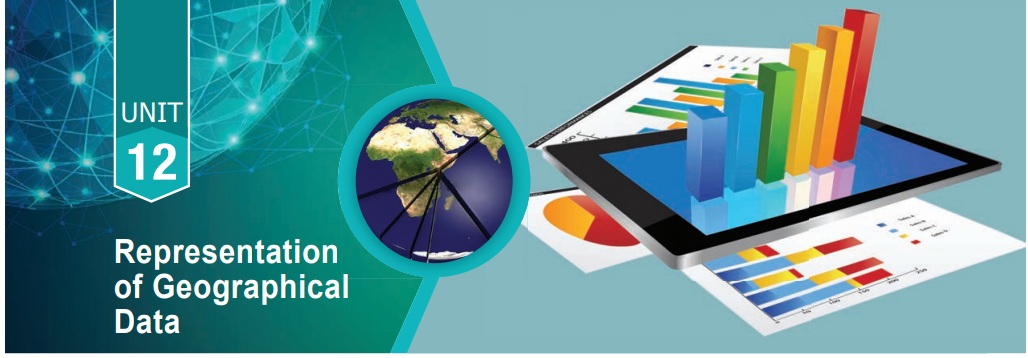Geography - Representation of Geographical Data | 12th Geography : Chapter 12 : Representation of Geographical Data
Chapter: 12th Geography : Chapter 12 : Representation of Geographical Data
Representation of Geographical Data
Representation of Geographical Data

Learning Objectives
* Identify various types of Geographical data.
* Understand various methods of drawing geographical data.
* Analyse the various methods of constructing diagram suitable for
particular data.
Introduction
Economists, statisticians,
and geographers make use of statistical facts and data in their respective fields.
Climatic data like temperature, pressure, rainfall, etc., may be represented by
diagram such as isotherms, isobars and isohyets respectively. Besides the tabular
form, the data may also be presented in some graphical or diagrammatic form. Population,
climatic, and Socio economic data can be represented visually for better understanding
in the form of graphs, diagrams, charts and maps. Thus, geographical data needs
to be scientifically visualised for appropriate cartographic communication. Therefore,
cartographic presentation of geographical data is important to explore the nature
of data, their pattern of variations over time and space, to analyse the data set,
and to identify and classify the real world objects.
We study climatic, economic and population
data in geography. The numerical data or facts when collected in a systematic manner
to serve some purpose and presented in a tabulated form they are called statistics.
The diagrams representing statistical
data are known as statistical diagrams. Geometrical figures such as bars, rectangles,
squares, circles, cubes, sphere, etc., and curves or lines are used to represent
statistical data diagrammatically. These diagrams serve the following purposes:
1. They enable us to compare figures
at a glance.
2. They cast easily memorable impression
on the mind.
3. They enable us to analyse the data
and draw inference easily.
Related Topics